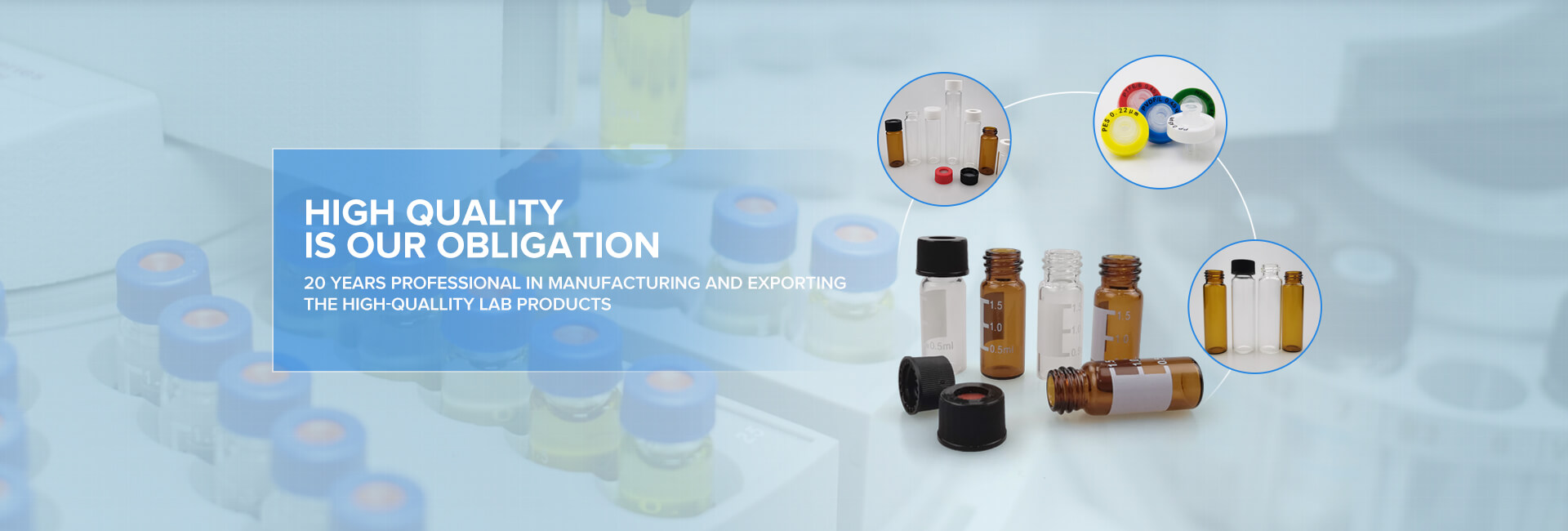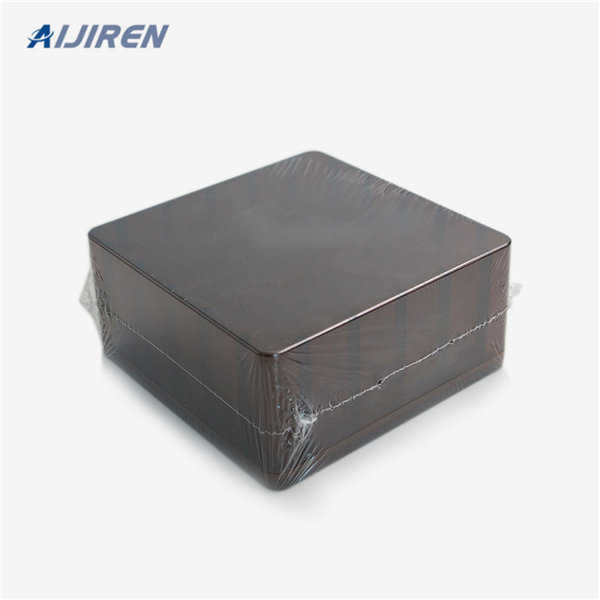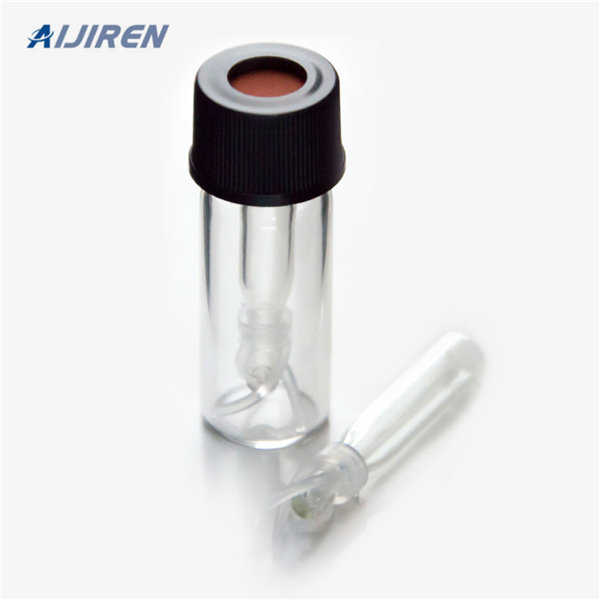


Aijiren vials and closures provide simple ways to boost laboratory productivity and return on investment. Aijiren premium certified vials, closures, high recovery vials, and vial inserts offer industry-leading performance; from the lowest bleed septum materials in our caps to the most inert glass vial materials, we are continuously refining our offerings by addressing small details delivering

Screw-top vials also come in different sizes, with vial caps made of either aluminum for crimp seals or plastic. Amber glass vials are available in 2-60 ml volume with a screw top. Inserts work in conjunction with any autosampler and fit either standard or wide openings vials.

Filter Vials are equivalent to a syringe filter built into your HPLC vial. Even a sample that appear clear to the eye potentially have particulates that can clog the machine and cause down time and costly maintenance. Filter Vials increase productivity by eliminating a transfer step required when using a syringe filter.

For example, if using the standard 2-mL flat-bottom vial, the residual volume of this vial for an Alliance 2695 is 750 uL. This means that if you do five injections of 10 uL from the same vial, you need (5 x 10(uL)) + 750(uL) = 800 uL in the vial.

Aijiren clear glass and polypropylene inserts and high recovery vials ensure you extract the maximum possible amount of your precious sample. They are the perfect fit for HPLC and GC instrument platforms across a wide variety of applications, including pharmaceutical, environmental, energy and fuels, forensics, materials science, biopharmaceutical, proteomics, and metabolomics.

15x45mm Screw Thread Vials for Waters® WISP 48-Position 15x45mm Screw Thread Vials Cat. no. 200 492, 200 494, 501 363 Made of Clear, Type 1 Class A or Amber, Type 1 Class B borosilicate glass or high quality polypropylene
.jpg)
Sample recovery rates after Samplicity ® filtration of 100 µL Milli-Q ® water into different vials containing inserts. Four or eight samples were simultaneously filtered for each vial type. Four or eight samples were simultaneously filtered for each vial type.

Jun 23, 2020 · For additional information, see 186002803 and Sample Vials and Accessories Chapter from the Waters Chromatography Columns and Supplies Catalog. Not able to find a solution? Click here to request help.
.jpg)
Aug 22, 2018 · Although Waters glass vial inserts are processed in ways similar to Waters glass vials, and are also available in deactivated (DV) versions, certification (which entails specific testing) is usually reserved for Waters vials that are part of COMBINATION PACKS (vials with associated caps), and certification is not carried out on packs of vials

Vials and Septa to meet your application: 1.5mL, 4mL, 10mL and 20mL headspace vials, EPA screw vials, crimpers and decappers, MS Certified Kits

Sample Vial w/White PP cap, PTFE disc; 24mm-400 (1) Sample Vial w/screw cap: 13mm-425 (1) Sample Vial w/screw cap: 15mm-425 (1) Sample Vial w/screw cap: 20mm-400 (1) Sample Vial w/screw cap: 22mm-400 (1) Sample Vial w/screw cap: 24mm-400 (1) Sample Vial w/screw cap: 24mm-410 (1) Sample Vial with write on spot (1) Sample Vials (1) Sample vial (2
.jpg)
Hanging inserts have either a flange top or top spring that suspends the insert correctly centered in the vial. Step inserts with a built-in glass flange are designed specifically for step vials with a special tapered neck. The flange suspends the insert correctly centered in the vial without causing a bulge in the septum when the cap is

Waters Alliance Total Recovery Vial Specifically designed for the side draw-port needle and the factory needle draw depth settings of the Waters Alliance 2690/2695 HPLC. This vial delivers maximum sample capacity (~1 mL) with minimum residual volume (~9 μL). Waters Maximum Recovery Vial Specifically designed for the bottom draw-port

TruView LCMS Certified Vials TruView autosampler vials minimize sample loss for MS, LC, and GC.. For liquid and gass chromatography and mass spec applications with sample concentration of ≤1 ng/mL, TruView LCMS Certified Vials are the best choice for scientists, combining neutral glass for low adsorption of small molecules with very few background masses detected by MS.